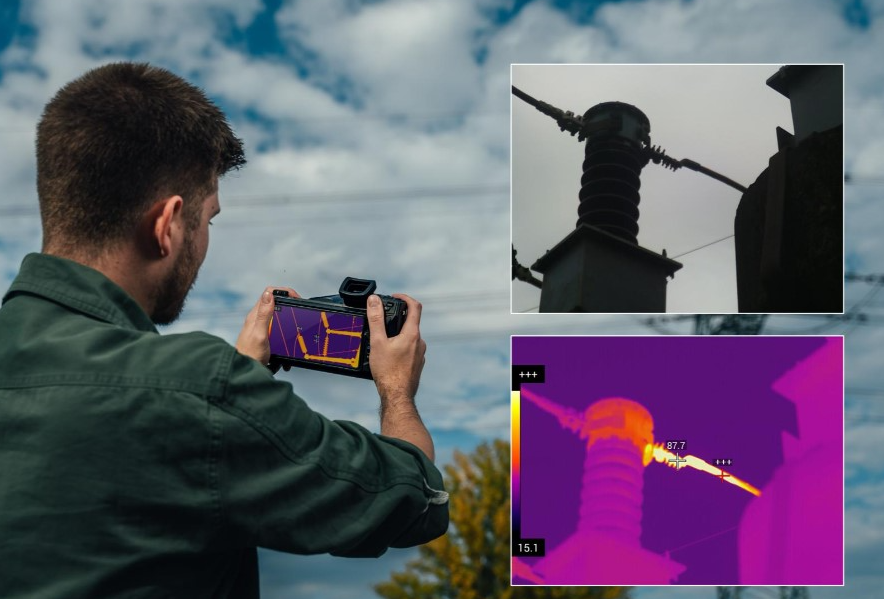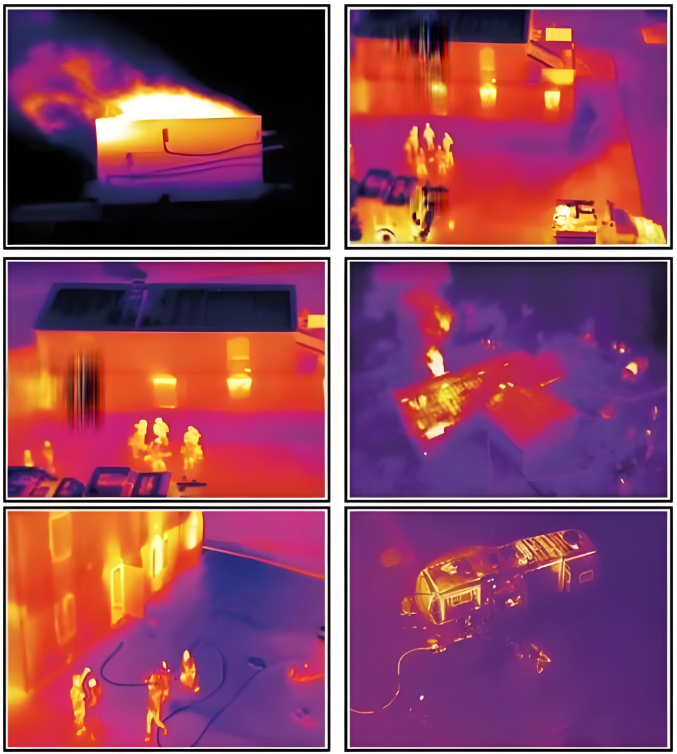In the rapid development of modern science and technology, nanomaterials, as a cutting-edge technology, have shown great potential in various fields. Have you ever heard of this term - nanomaterials? Simply put, it refers to materials with a size between 1 and 100 nanometers. Because of its small size, this material exhibits completely different properties from macroscopic materials in physical, chemical and other properties. In the research and testing of nanomaterials, infrared thermal imagers are becoming more and more widely used and have become a powerful assistant for scientists.
What is an infrared thermal imager?
First, let's talk about what an infrared thermal imager is. Simply put, an infrared thermal imager is a device that can construct a temperature distribution map of an object by sensing the infrared radiation emitted by the object. You can think of it as a visual thermometer, except that it can "see" heat that you can't see.

How infrared thermal imagers work
The working principle of infrared thermal imagers is actually not complicated. It is mainly based on the basic principle of thermal radiation: any object with a temperature above absolute zero (-273.15°C) will emit infrared radiation. Infrared thermal imagers use infrared detectors to convert these radiation signals into electrical signals, which are then converted into visual thermal images through processors.
Uniqueness of Nanomaterials
So why do nanomaterials need to be tested with infrared thermal imagers? The reason is simple. The properties of nanomaterials are extremely complex and elusive. Due to their extremely small size, traditional testing methods often have difficulty in measuring their performance comprehensively and accurately. Infrared thermal imagers can measure the temperature changes of nanomaterials non-contactly and quickly, thus helping researchers better understand their thermal properties.
Application of infrared thermal imagers in thermal performance testing of nanomaterials
1. Thermal conductivity test
Thermal conductivity is an important parameter to measure the thermal conductivity of materials. In nanomaterials, due to size effects, thermal conductivity may be significantly different from its macroscopic counterparts. Using infrared thermal imagers, it is easy to measure the changes in thermal conductivity of nanomaterials at different temperatures.
2. Thermal diffusivity measurement
The thermal diffusivity reflects the speed at which heat diffuses inside the material. With infrared thermal imagers, the temperature changes of nanomaterials during heating or cooling can be captured in real time, so as to calculate their thermal diffusivity.
3. Thermal stability evaluation
The thermal stability of nanomaterials is an important indicator of whether they can operate stably for a long time in practical applications. Infrared thermal imagers can detect temperature changes of materials under high temperature environments and help evaluate their thermal stability.

4. Temperature field distribution measurement
The temperature field distribution information of nanomaterials under different conditions is crucial for their thermal management optimization. Using infrared thermal imagers, detailed temperature field distribution data of nanomaterials during heating and heat dissipation can be obtained.
5. Non-uniformity detection
Nanomaterials may have structural non-uniformity during the manufacturing process, which will affect their overall performance. Infrared thermal imagers can quickly identify non-uniform parts in materials by detecting abnormal temperature areas.
6. Thermal crack analysis
Nanomaterials may have thermal cracks under high temperature environments. Infrared thermal imagers can capture temperature changes when cracks appear and expand in real time, providing important data for crack analysis.
Summary
As a powerful tool, infrared thermal imagers play a vital role in the testing and research of nanomaterials. Through the introduction of this article, I believe you have a more comprehensive understanding of the working principle, application and advantages of infrared thermal imagers. In the future, with the continuous advancement of technology, infrared thermal imagers will surely play a more important role in nanomaterial research and promote the development of this field.


